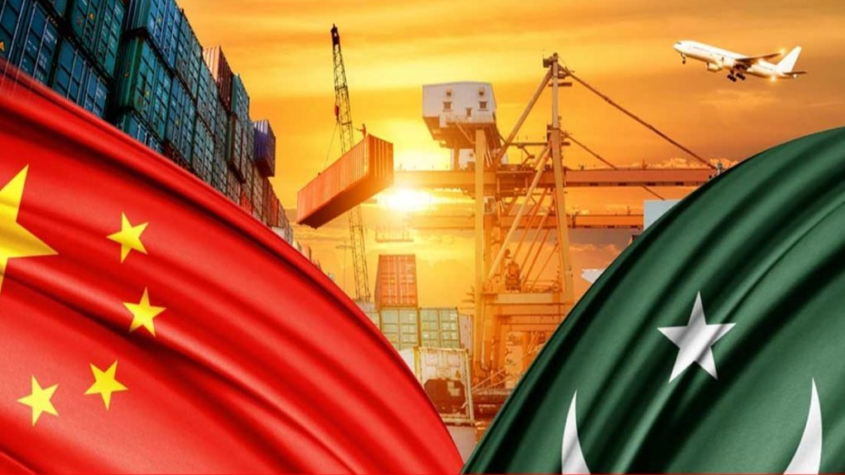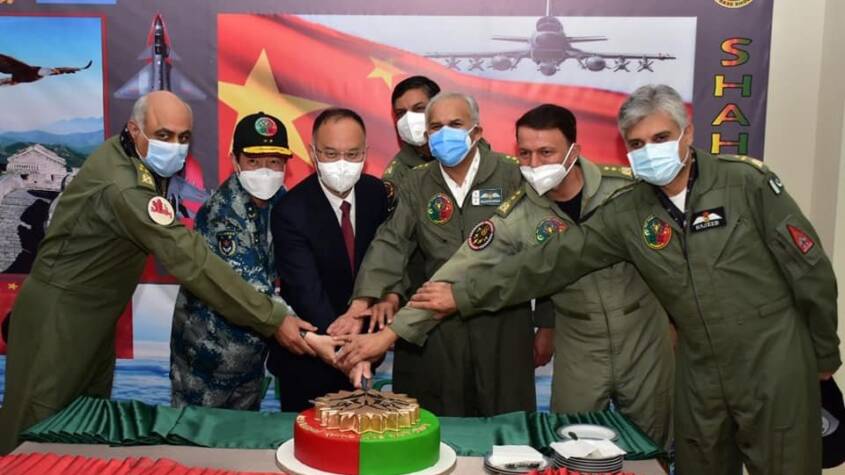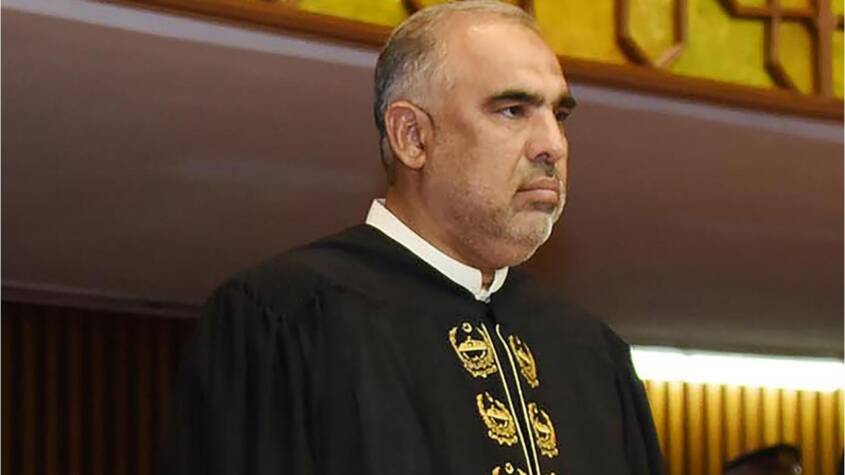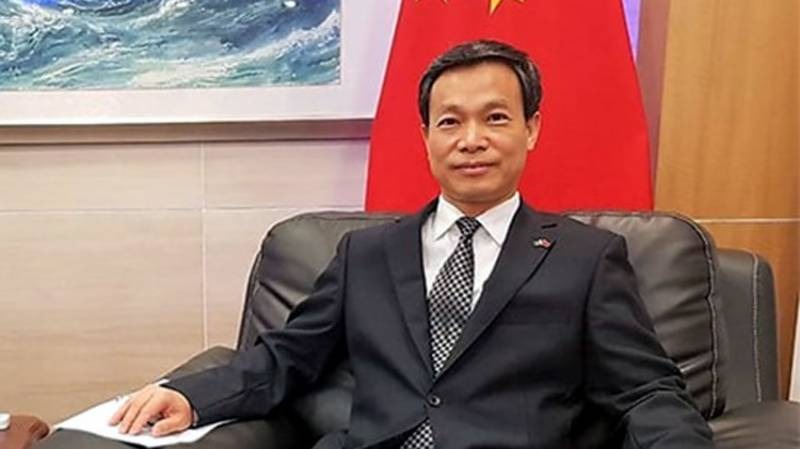In the last three columns, the agreed framework of China-Pakistan Economic Corridor (CPEC) was laid out, mapping its immense scope and expanse; leading to latest progress, modestly reported. This column dispels following perceptual fallacies about this vital project of Sino-Pakistan national importance.
First, that the Belt and Road Initiative (BRI) with CPEC as its flagship project, is a tool of Chinese neo-imperialism. That China is using BRI/CPEC for advancing its global power and influence. True partially. No super power offers free lunches, but the Chinese mode generally and CPEC particularly is not exploitative; it offers a win-win situation for participating nations and is extensively sensitive to social development. BRI/CPEC is not about economy alone; it’s about geo-economics, and establishing a parallel non-exploitative economic system… and that makes the West uncomfortable.
The 129 or so mainly under-developed and developing nations on board will benefit from the regional development projects and enhanced connectivity under BRI. Most of these nations have no access to otherwise affordable capital. CPEC in particular has a strong component of social development, poverty alleviation and demographic uplift, unlike similar programmes under other international donors. For full-scale socio-economic development, CPEC is Pakistan’s only choice, having tried others. Chinese conditionalities are comparatively milder and mostly without political caveats.
Detractors refer to China using Gwadar as a strategic naval base in its ‘string of pearls strategy’, to alter global/regional geo-strategic status-quo, through its rising influence. This — critics cite — is a threat to global commerce passing through international sea lines of communications (SLOCs) closer to Gwadar. However, to the contrary, Gwadar is not leased, sold and/or surrendered to China or its companies. It firmly remains part of Pakistan, which has every right to develop it, as it pleases. Gwadar’s comparison with the Hambantota Port financing model in Sri Lanka is also erroneous and not applicable; because CPEC as a proof of concept (POC) pilot project, is pivotal to the success of the more significant and global BRI.
Second, that CPEC lacks transparency. Not true, as all available information about the project is open-sourced and available on the CPEC Authority website. Project modalities, like terms and conditions for Chinese companies, investment options, availability of local partners/investors, international financing and profit repatriation, etc are amply covered in each contract. If there are ‘any’ supervisory lapses by the Pakistani interlocutors in individual contracts, CPEC and China cannot be held responsible as a whole.
Third, that CPEC would overburden Pakistan’s likely balance of payments, turning it into a ‘debt trap’. This is far from truth. One, the total committed amount under CPEC is over $50 billion in two broad categories; $35 billion allocated for energy projects while $15 billion kept for infrastructure, Gwadar development, industrial zones and mass-transit schemes. About 70% ($35 billion) of the original outlay was to be provided by Pakistan over an extended timeframe of 14-15 years (2017-2030). This makes the average annual investment under CPEC closer to around $3-4 billion or 6-7 % of Pakistan’s annual investment budget. Export revenues (thanks to uninterrupted power supply as CPEC projects have already added around 11,000 MW) were modelled to rise up to $40 billion by 2024, easily absorbing this additional amount without much stress on the balance of payment.
Two, as per an IMF report (2017), the peak outflows (by 2024/25) on account of CPEC debt servicing, profit and dividend repatriation and increased imports were not expected to go beyond $3.5-4 billion, gradually declining thereafter. If our exports grow at least 10% annually (exports grew at 12% in 2017 and 14% for Q2 this year, thanks to decreased energy shortages), the potential earning (calculated at $6-7 billion) would easily afford the peak outflows. Unforeseen circumstances like the corona pandemic, has strained Pakistan’s capital availability but this is expected to be short-term and transitory. Economy/exports are already showing signs of recovery.
Fourth, that the CPEC projects would only benefit Punjab. CPEC’s Punjab-centricity is negated as its projects, in all core areas, are spread nationwide, as articulated in three earlier columns.
Fifth and more sinister is the ‘anti-China campaign’ mainly by the US/Western media/governments and their local interlocutors in media and our ashhrafiyya (elite) in/out of power corridors. These elements cite China’s ultimate economic domination of Pakistan given Pakistan’s fragile, highly indebted economy, weak exports, dependency on foreign assistance and susceptibility to periodic external payment crises.
For greater clarity, infrastructure projects are financed by grants and long-term concessional loans with an average interest rate of 2% or so. Chinese state-owned companies — designated by Chinese government — are financing projects through ‘project loans’ from government-owned banks on concessional terms. And in several projects, Chinese and Pakistani companies are into joint ventures. And Chinese investment benefits Pakistan also through technology transfer, job creation and value addition etc.
Easing energy shortages is to reduce import of capital goods, leading to saving on import bill. Reduced demand for imported fuel oil/diesel will ease-up POL imports. The above calculations do not take into account the ‘transit fees’ of the Corridor or associated economic activity generated in the CPEC command areas. These calculations also do not reflect the ‘second order bonus’, whereby greener projects make our industries more competitive for import substitutes and new export products. And sustained Chinese inflows are projecting Pakistan as an attractive investment destination.
The cumulative effect of all this is not only enabling Pakistan to repay its obligations under CPEC; Pakistan shall have surplus capital for investment in more projects. This is hard-nosed economics and not some gullible rosy picture-painting. So, the chance to break Pakistan’s begging bowl is now or never.
Chinese interlocutors are especially incensed by misrepresentation of facts by many Pakistanis and the constant barrage of doubts being created in the Pakistani population — from inter-marriages to economic enslavement etc. China is characterised as the erstwhile East India Company and Pakistan its likely satellite. Chinese companies are also irked by Pakistan’s red tape, inconsistency of power tariffs and slower dispute resolution etc.
Sixth, that Pakistan has a risky security environment. Actually, Pakistan protects Chinese working on CPEC projects through an integrated security system, incorporating local police (Punjab has raised special CPEC police), paramilitary forces, intelligence apparatus and Pakistan Army. The army has raised two ‘Security Divisions’ (a division roughly has 20,000 personnel) for K-P/Punjab and Sindh/Balochistan respectively. There are over 80,000 Chinese nationals living in Pakistan including around 25,000 deployed on CPEC projects. Attack on any Chinese anywhere for any reason is exploited as attack on CPEC workforce.
In the final verdict, Pakistan should stay the course and China to maintain its amity through re-scheduling of loans on softer terms, being sensitive to corona-induced damage to Pakistan’s economy. Expectations should be manageable and CPEC benefits spread equally far and wide.
If CPEC can boost Pakistan’s industrial productivity, exports, and job creation, it should be a game-changer. It actually is.
















